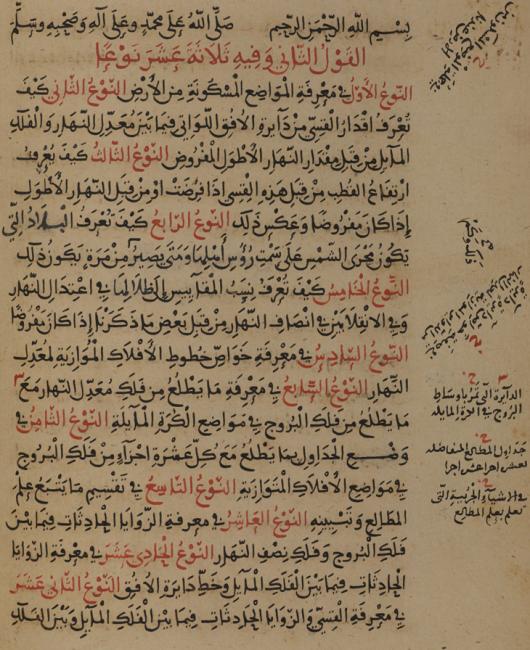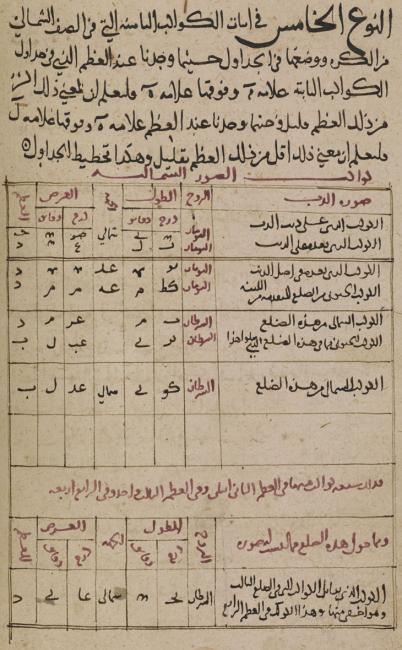Overview
Among the many scientific works of the Greeks that were translated into Arabic from the late eighth to the tenth century AD in the Near East there were, of course, works on astronomy and astrology. Among these works was the great handbook of astronomy known since the Middle Ages as the Almagest, written by the Greek mathematician and astronomer Claudius Ptolemaeus (Ptolemy) around the year 150 AD in Alexandria, Egypt.
The Etymology of the Title
In the original Greek, the work was entitled Mathematiké Sýntaxis, (‘The Mathematical Composition’) and beside this, there also existed a manuscript tradition in which the text was given the title Megále Sýntaxis, (‘The Great Composition’). The medieval form of the name, Almagest, from the Arabic al-Majasṭī, testifies that there must also have existed a rare form of the title in the superlative, Megíste Sýntaxis, or ‘The Greatest Composition’.
Linguistic and historical reasons point to the fact that the Arabs learnt the name of the author, Ptolemy, and the title of the work in the superlative form, Almagest, before they started their own study and translations of the Greek text. In other words, they learnt the name from contacts with elements of Middle-Persian (Pahlavi) scholarship living on into the first centuries of the expansion of the Arabic-Islamic realm in the Near and Middle East. Both the Arabic names of Ptolemy himself (Baṭlamyūs) and of his great astronomical handbook, the Almagest (al-Majasṭī) are clearly derived from Middle-Persian (Pahlavi) forms. If these names were derived directly from Greek (and not, as here, from Middle-Persian) quite different Arabic pronunciations and spellings would have resulted.
Arabic Translations of the Almagest
A short and clear survey of the Arabic translations of the Almagest can be found in the work of Abū l-Futūḥ Aḥmad ibn Muḥammad Ibn al-Ṣalāḥ (died in Damascus 1154 AD) on the errors and mistakes in the transmission of its star catalogue. For this critical work, based on first-hand manuscript material still available in the time of Ibn al-Ṣalāḥ, five translations of the Almagest were used, all made from the original Greek text. The first of these was a Syriac translation (now lost), the second an old Arabic translation dating to around 800 AD (also now lost), the third was the Arabic translation of al-Ḥajjāj, the fourth was the Arabic translation of Isḥāq ibn Ḥunayn, and the fifth was the version of Isḥāq ibn Ḥunayn’s translation as emended by Thābit ibn Qurra.

Of these five versions, three have not survived. The lost versions are the Syriac version (Syriac is not Arabic but was a Semitic idiom of its own, mostly spoken by Christians in those times in the Near East), the first Arabic version, and the version of Isḥāq ibn Ḥunayn made for Abū l-Ṣaqr ibn Bulbul, vizier (879–890 AD) of the caliph al-Muʽtamid (reigned 870–892 AD), i.e., the pure translation of Isḥāq, without the amendments of Thābit ibn Qurra. These versions we know only from bibliographical notes and from various citations.
However, two of these five versions do survive and have recently been used for a modern edition of the star catalogue in Books VII–VIII of the Almagest. They are the translation of al-Ḥajjāj ibn Yūsuf ibn Maṭar, made in 212 Hijra/827–828 AD with the help of the Greek, Sergius Son of Elias, in Bagdad, and the translation of Isḥāq as emended by Thābit ibn Qurra (died 901 AD). Al-Ḥajjāj´s version exists in two manuscripts, one of them complete. The Isḥāq/Thābit version exists in ten manuscripts, of which three are complete.

The Translators and Comparison of the Texts
The three translators here named, al-Ḥajjāj, Isḥāq ibn Ḥunayn, and Thābit ibn Qurra, are well known in the history of Arabic-Islamic science. Beside the Almagest, they have translated other Greek scientific works, some into Syriac before translation to Arabic and others directly into Arabic. Isḥāq and Thābit have also written works of their own in the field.
Comparison of the texts has shown that Gerard of Cremona (died 1187 AD) – who translated the Almagest in Toledo in the second half of the twelfth century from Arabic into Latin – followed the Ḥajjāj version for Books I–IX, and the Isḥāq/Thābit version for Books X–XIII. However the star catalogue, despite being in the Ḥajjāj section (Books VII–VIII), is rendered according to a form of the Isḥāq/Thābit version. It seems that Gerard was depending on different Arabic manuscripts which became available to him in the course of time in Toledo, which was in the Christian part of Spain at that time.
